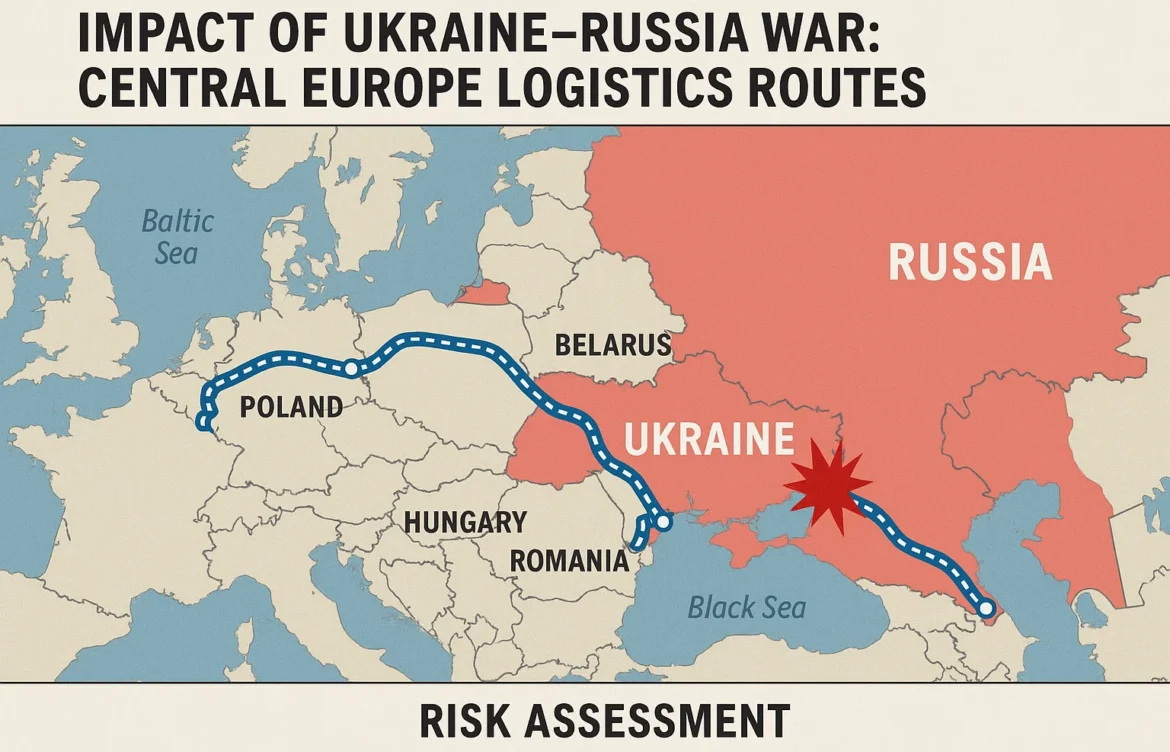
Ukraine’s Strike on Russia: What It Means for China-Europe Rail Freight
In early June 2025, Ukraine launched a highly coordinated drone assault on five Russian air bases, in what has become known as “Operation Spiderweb.” While the attack was aimed at military infrastructure, the ripple effects are already being felt far beyond the battlefield — including in the world of international logistics.
For Chinese exporters relying on land-based routes to Europe, especially the traditional China-Europe Railway that passes through Russia, this operation has reignited concerns over security, compliance, and reliability.
What Happened?
Ukraine reportedly used AI-powered drones hidden inside modified shipping containers, which were unknowingly transported by Russian truck drivers to military bases deep inside Russia. At the appointed time, the containers deployed drones that severely damaged multiple strategic bombers and radar aircraft — at facilities as far as 4,000 km from the Ukrainian border.
The sheer reach and effectiveness of the attack exposed significant vulnerabilities within Russian territory.
Why Does This Matter for Freight?
While the attacks did not target any logistics infrastructure directly, their psychological and strategic impact is undeniable. Here’s how they’re affecting the China-Europe rail corridor:
- Increased Perceived Risk of Russian Routes
The traditional northern route of the China-Europe Railway — running through Kazakhstan, Russia, Belarus, and into Poland — has long been a reliable land corridor. But with war escalating inside Russian borders, the sense of security has eroded. Shippers and insurers alike are reassessing the stability of routing goods through a potential conflict zone.
- Disruption Fears Lead to Higher Costs
Freight forwarders report growing reluctance among European clients to accept shipments routed via Russia. This hesitation translates into rerouting to alternative paths such as the Middle Corridor (via the Caspian Sea, South Caucasus, and Turkey), which, while safer, are more expensive and logistically complex. The result: longer transit times and higher shipping costs.
- Customs and Regulatory Challenges
Russia has also increased customs inspections for certain types of cargo, particularly dual-use items, which can further delay goods in transit. For high-value or time-sensitive shipments, this adds a layer of unpredictability exporters can ill afford.
Alternative Routes on the Rise
As a result of these pressures, two alternative corridors are gaining attention:
- The Middle Corridor: Via Kazakhstan, the Caspian Sea, Azerbaijan, Georgia, and Turkey. This route avoids Russian territory entirely, but depends on multimodal transfer points and currently lacks the scale of the northern route.
- The Southern Corridor: Via China, Central Asia, Iran, and Turkey. A newly launched China-Kazakhstan-Iran-Europe rail line may offer long-term promise, although infrastructure and diplomatic complexities remain.
What Can Exporters and Freight Providers Do?
- Diversify Routing: Avoid over-reliance on any single corridor. Flexibility is key in volatile environments.
- Strengthen Partnerships: Collaborate closely with logistics providers who offer real-time risk assessment and agile rerouting capabilities.
- Monitor Geopolitics: Stay updated on the evolving security situation in Russia and neighboring countries.
Conclusion
Ukraine’s daring military strike may mark a turning point not only in the conflict itself but also in how international trade flows between East and West are structured. For now, the China-Europe land bridge remains operational — but increasingly fragile. Proactive planning and route diversification will be essential for exporters seeking to maintain resilience in a world where geopolitics and logistics are more intertwined than ever.
